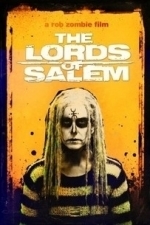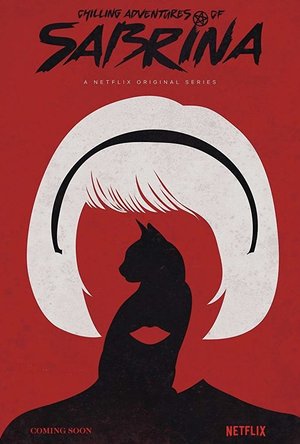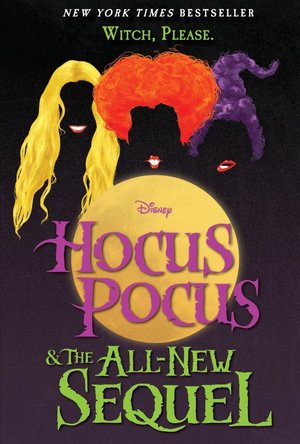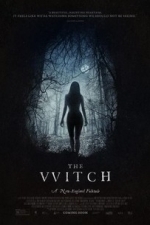Search
Matthew Krueger (10051 KP) rated The Lords of Salem (2013) in Movies
Sep 24, 2019
Backmasking
Does any remember if you play any of the beatles songs backwards their are hidden messages. Same some of queens songs.
The term is called backmasking is a recording technique in which a sound or message is recorded backward onto a track that is meant to be played forward. Backmasking is a deliberate process, whereas a message found through phonetic reversal may be unintentional.
So how does tie into the movie, well in the movie, the main person gets a mysterious cd and once she plays it, it has hidden messages, the measages are the notes and the notes in the song keep on repeating themself.
The Plot: A radio DJ (Sheri Moon Zombie) in Salem, Mass., is plagued by nightmarish visions of vengeful witches after she plays a record by a mysterious group known only as "The Lords."
Heidi the main charcter- has a vision of women who worship Satan, at an unspecified time in the past, ritually birthing a baby then damning the child. The vision stops once Whitey turns the record off.
If you play some of the beatles songs and queens songs backwards their are satanic messages, same with the cd the heidi plays, but itstead of words its just notes/the insturmentis. Hedi gets really invested of the cd, same with people who thought if you played a beatles song backwards you hear hidden satanic messages.
This movie is very underrated. Its scary, mysterious, horrorfying, thrilling and more.
I would highly reccordmend this movie.
The term is called backmasking is a recording technique in which a sound or message is recorded backward onto a track that is meant to be played forward. Backmasking is a deliberate process, whereas a message found through phonetic reversal may be unintentional.
So how does tie into the movie, well in the movie, the main person gets a mysterious cd and once she plays it, it has hidden messages, the measages are the notes and the notes in the song keep on repeating themself.
The Plot: A radio DJ (Sheri Moon Zombie) in Salem, Mass., is plagued by nightmarish visions of vengeful witches after she plays a record by a mysterious group known only as "The Lords."
Heidi the main charcter- has a vision of women who worship Satan, at an unspecified time in the past, ritually birthing a baby then damning the child. The vision stops once Whitey turns the record off.
If you play some of the beatles songs and queens songs backwards their are satanic messages, same with the cd the heidi plays, but itstead of words its just notes/the insturmentis. Hedi gets really invested of the cd, same with people who thought if you played a beatles song backwards you hear hidden satanic messages.
This movie is very underrated. Its scary, mysterious, horrorfying, thrilling and more.
I would highly reccordmend this movie.
Saffy Alexandra (89 KP) rated Chilling Adventures of Sabrina - Part One in TV
Jun 8, 2019
As someone who grew up with the old Sabrina TV Show back as a teenager I didn't exactly have high hopes for this show.
However, I was pleasantly surprised by how different and good this new adaptation is! It still keeps the small amount of humour with now more horror and sometimes gruesome imagery.
I am terrified of horror, but even I can cope with this amount of gore and horror without fleeing the room.
I particularly like with this version the different versions of Aunt Hilda and Aunt Zelda, the way they portray the differences in Witches from the dark and broody to the light and humorous. How you can be good but still grumpy. I love the introduction of Ambrose who keeps the series updated with humour and sass, he is probably one of my favourite characters in this show.
To have Salem as a certain type of familiar (no spoilers i swear) is an interesting touch and brings a new element to the show that the former was lacking. But it does also touch on Witch lore which keeps you interested and motivated into watching this series as it carries on.
The only bad (and not even that bad) thing I could mention is the fact sometimes Sabrina literally goes looking for trouble where she needn't. But that is a character flaw which makes her all the more human/Witch to the viewers. Even though it can be annoying, perhaps it's my age that is making me cynical, I can't dispute it's results in keeping the viewer engaged and interested.
However, I was pleasantly surprised by how different and good this new adaptation is! It still keeps the small amount of humour with now more horror and sometimes gruesome imagery.
I am terrified of horror, but even I can cope with this amount of gore and horror without fleeing the room.
I particularly like with this version the different versions of Aunt Hilda and Aunt Zelda, the way they portray the differences in Witches from the dark and broody to the light and humorous. How you can be good but still grumpy. I love the introduction of Ambrose who keeps the series updated with humour and sass, he is probably one of my favourite characters in this show.
To have Salem as a certain type of familiar (no spoilers i swear) is an interesting touch and brings a new element to the show that the former was lacking. But it does also touch on Witch lore which keeps you interested and motivated into watching this series as it carries on.
The only bad (and not even that bad) thing I could mention is the fact sometimes Sabrina literally goes looking for trouble where she needn't. But that is a character flaw which makes her all the more human/Witch to the viewers. Even though it can be annoying, perhaps it's my age that is making me cynical, I can't dispute it's results in keeping the viewer engaged and interested.
Rachel King (13 KP) rated Pumpkin Roll (A Culinary Mysteries, #6) in Books
Feb 11, 2019
This book is the most recent in a mystery series, but the first book I have read by Josi S. Kilpack. I do not read much in the mystery genre, but the cooking aspect of the book interested me enough to try this one. All of the page numbers to the recipes are listed nicely on the back of the first page, so I was able to check those out without having to search for them, and they do look like quite delicious recipes, perfect for this time of year.
The main character is an older woman, Sadie Hoffmiller, who has recently opened a P.I. business in her hometown in Colorado, but has taken a vacation to Boston with her love interest, Pete, to house-sit and watch over his three grandsons. Right away she strikes me as both ultra-conservative - Sadie and Pete sleep in separate bedrooms - and a perfectionist. Not only is her cooking described in detail, but also her cleaning and personal grooming habits. She also comes off as a "busy-body" as she very quickly gets involved in the life of the woman who lives across the street and bears the reputation of a witch, the eccentric Mrs. Wapple. It is as if she is so addicted to her job back home that she must continue its nosy approach wherever she travels.
The city of Boston is obviously chosen for its proximity to Salem, Massachusetts and the many references and allusions to ghosts and witches throughout the plot. When pranks begin to strike in the house that Sadie and Pete are staying at, the obvious choice is ghosts, but their sensibilities and penchant for detective work prevent them from embracing this as the solution.
When something dire happens to Mrs. Wapple halfway through the book, Sadie is right in the thick of it, her curiosity taking prominence over even her duties as babysitter with Pete. Not even a vacation will deter her from solving yet another case.
On the whole, the book is entertaining, though Sadie can be annoying at times. Like any mystery, I want to know who is the responsible party, but my favorite part of this book is definitely the recipes.
The main character is an older woman, Sadie Hoffmiller, who has recently opened a P.I. business in her hometown in Colorado, but has taken a vacation to Boston with her love interest, Pete, to house-sit and watch over his three grandsons. Right away she strikes me as both ultra-conservative - Sadie and Pete sleep in separate bedrooms - and a perfectionist. Not only is her cooking described in detail, but also her cleaning and personal grooming habits. She also comes off as a "busy-body" as she very quickly gets involved in the life of the woman who lives across the street and bears the reputation of a witch, the eccentric Mrs. Wapple. It is as if she is so addicted to her job back home that she must continue its nosy approach wherever she travels.
The city of Boston is obviously chosen for its proximity to Salem, Massachusetts and the many references and allusions to ghosts and witches throughout the plot. When pranks begin to strike in the house that Sadie and Pete are staying at, the obvious choice is ghosts, but their sensibilities and penchant for detective work prevent them from embracing this as the solution.
When something dire happens to Mrs. Wapple halfway through the book, Sadie is right in the thick of it, her curiosity taking prominence over even her duties as babysitter with Pete. Not even a vacation will deter her from solving yet another case.
On the whole, the book is entertaining, though Sadie can be annoying at times. Like any mystery, I want to know who is the responsible party, but my favorite part of this book is definitely the recipes.

Justice Denied: Extraordinary Miscarriages of Justice
Book
An incisive examination by the bestselling author of The Mammoth Book of Gangs of some of the many...
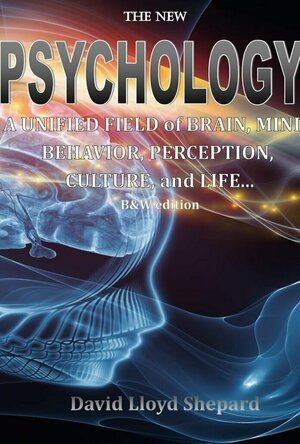
The New PSYCHOLOGY
Book
From the mind of genius to the suicide bombers of today’s news, from science to sex, understanding...
Maris (8 KP) rated Hocus Pocus and the All-New Sequel in Books
Jun 10, 2019
I can not tell you how disappointing this book was. Everything from the start of the sequel to the very end. I almost DNF the book, but since this is a sequel to one of my favorite Halloween movies as a child I wanted to finish the story. I knew it wasn't going to get better.
The beginning of the book is just a recap from the movie with more knowledge of the characters feelings and a little bit more about the Sanderson sisters. I'm pretty bummed out that the author left out my favorite scene from the movie which was when the kids ran up to the cop who really wasn't a cop! I just think that part should have been put into the book.
Once you get to the sequel its 25 years later on Halloween day in Salem. Max and Allison have a daughter named Poppy. I'm curious to why the author wanted the daughter name Poppy when everyone else has normal names like the author wanted the character to stand out more? Poppy has two close friends, Isabella and Travis. Poppy has a crush on her friend Isabella, and Travis who looks out for Poppy helping her with school, and social life with the other kids when Poppy seems to be getting attacked by others.
To sum it up without giving away to much of the story, Poppy doesn't believe in her parents or her Aunt Dani's story about Sanderson's sister when they were kids. Poppy, Isabella, and Travis head to the Sanderson's house and pretty much did exactly what her parents did 25 years ago minus the black candle.
It seems to me the author tried too hard to make this sequel to be better or equal to the first Hocus Pocus that she was adding too much of the same stuff from the first story. I didn't like the same jokes and it wasn't nearly as funny. The story was just too much for me and didn't have enough originality for me. One thing that was irritating was that Sarah Sanderson would say Amok Amok Amok in the first story than with the sequel she always seems to be repeating herself with words like Afoot and such.
You do get to read some familiar characters from the first story which was nice. There is a new character named Elizabeth who is Winnie, Mary, and Sarah's sister. I honestly didn't think it was necessary to add another witch to the famous Sanderson witches.
All in all this story wasn't it for me. Like I said I'm pretty bummed out about it. I couldn't get into the story, everything just seemed forced together and that the author was trying to hard to make this story stand out.
The beginning of the book is just a recap from the movie with more knowledge of the characters feelings and a little bit more about the Sanderson sisters. I'm pretty bummed out that the author left out my favorite scene from the movie which was when the kids ran up to the cop who really wasn't a cop! I just think that part should have been put into the book.
Once you get to the sequel its 25 years later on Halloween day in Salem. Max and Allison have a daughter named Poppy. I'm curious to why the author wanted the daughter name Poppy when everyone else has normal names like the author wanted the character to stand out more? Poppy has two close friends, Isabella and Travis. Poppy has a crush on her friend Isabella, and Travis who looks out for Poppy helping her with school, and social life with the other kids when Poppy seems to be getting attacked by others.
To sum it up without giving away to much of the story, Poppy doesn't believe in her parents or her Aunt Dani's story about Sanderson's sister when they were kids. Poppy, Isabella, and Travis head to the Sanderson's house and pretty much did exactly what her parents did 25 years ago minus the black candle.
It seems to me the author tried too hard to make this sequel to be better or equal to the first Hocus Pocus that she was adding too much of the same stuff from the first story. I didn't like the same jokes and it wasn't nearly as funny. The story was just too much for me and didn't have enough originality for me. One thing that was irritating was that Sarah Sanderson would say Amok Amok Amok in the first story than with the sequel she always seems to be repeating herself with words like Afoot and such.
You do get to read some familiar characters from the first story which was nice. There is a new character named Elizabeth who is Winnie, Mary, and Sarah's sister. I honestly didn't think it was necessary to add another witch to the famous Sanderson witches.
All in all this story wasn't it for me. Like I said I'm pretty bummed out about it. I couldn't get into the story, everything just seemed forced together and that the author was trying to hard to make this story stand out.
Sean Freese (4 KP) rated The Witch (2015) in Movies
Jun 25, 2020
THE VVITCH
The full title is, The Witch: A New England Folktale. Like Grimm’s fairytales, American folklore has taken revisions over the centuries to become a palatable collection of juvenile life lessons. Anyone who has read the original versions of these stories knows how brutal, horrifying, and far removed they are from our current values. As much as I would not condone reading original classic witch tales to a small child, they do contain much deeper implications and ideas than the simple “Don’t tell lies” that are gleaned from modern revisions. What’s fascinating about The Witch is how familiar the setting and story is, without a single cliché or moment of prediction to speak of. The evil that was feared in 17th Century Puritan America has been so eclipsed by the human horrors of The Salem Witch Trials, that we have forgotten what it was to fear a witch.
We know these characters only by their Christian names. William removes his family from their Colonial settlement due to an incompatibility of faith. The colony of Puritans isn’t Christian enough. With his wife, Katherine, William takes his 4 children into the wilds of the Northeast. Airs of The Crucible envelope the setting. Common pronouns are replaced with “thines” and “thous”. Dialogue is delivered as if quoted from Shakespeare or the Bible itself. In the past, this oral dynamic has always sounded ardently rehearsed. Somehow, it’s natural here. Considering William’s rigorous faith, you might expect him to be an overbearingly shrewd father. He is in fact a loving and good man of his time; often a pushover. Katherine is the more fearsome parent, with a shrill voice and gaunt pointed face. While they do live in hardship, this is a good family. Once Fall deadens the colors and greys the skies, things begin to take a disturbing turn.
Ralph Ineson and Kate Dickie play the parents without an exaggeration of the material. Remarkable still are the actors portraying their children. Harvey Scrimshaw plays William’s 10-year-old son, Caleb, as natural as can be imagined. The dramatic beats of a horror movie come with taxing climactic moments and Scrimshaw acts beyond his years. Anya Taylor-Joy plays the eldest daughter Thomasin; a doe-eyed blonde beauty who plays the most relatable character of the flock. The dynamic between Caleb and Thompsin has notes of innocent sexual tension. Their secluded life leaves a great deal of new feelings that can’t be addressed due to their customs. These feelings lead to foreign temptations that are preyed upon by the timeless evil beyond the trees.
The greatest achievement of this film is how faithful it is to its setting and story, while keeping enough behind the veil to become engrossing. The tale feels as old as any, drawing from universal fears and motivations. How it draws you in, keeping you tied to the victims and their perspective while keeping the evil at arm’s length, shows a discipline of craft that greatly compliments the material. Much like vampires, witches have been trivialized and diluted by film into something superficially attractive and entertainingly evil. As with Noseferatu, seeing a witch living a damnable existence of ugliness is much more appropriate. If they’re ever beautiful, they won’t be for long.
The full title is, The Witch: A New England Folktale. Like Grimm’s fairytales, American folklore has taken revisions over the centuries to become a palatable collection of juvenile life lessons. Anyone who has read the original versions of these stories knows how brutal, horrifying, and far removed they are from our current values. As much as I would not condone reading original classic witch tales to a small child, they do contain much deeper implications and ideas than the simple “Don’t tell lies” that are gleaned from modern revisions. What’s fascinating about The Witch is how familiar the setting and story is, without a single cliché or moment of prediction to speak of. The evil that was feared in 17th Century Puritan America has been so eclipsed by the human horrors of The Salem Witch Trials, that we have forgotten what it was to fear a witch.
We know these characters only by their Christian names. William removes his family from their Colonial settlement due to an incompatibility of faith. The colony of Puritans isn’t Christian enough. With his wife, Katherine, William takes his 4 children into the wilds of the Northeast. Airs of The Crucible envelope the setting. Common pronouns are replaced with “thines” and “thous”. Dialogue is delivered as if quoted from Shakespeare or the Bible itself. In the past, this oral dynamic has always sounded ardently rehearsed. Somehow, it’s natural here. Considering William’s rigorous faith, you might expect him to be an overbearingly shrewd father. He is in fact a loving and good man of his time; often a pushover. Katherine is the more fearsome parent, with a shrill voice and gaunt pointed face. While they do live in hardship, this is a good family. Once Fall deadens the colors and greys the skies, things begin to take a disturbing turn.
Ralph Ineson and Kate Dickie play the parents without an exaggeration of the material. Remarkable still are the actors portraying their children. Harvey Scrimshaw plays William’s 10-year-old son, Caleb, as natural as can be imagined. The dramatic beats of a horror movie come with taxing climactic moments and Scrimshaw acts beyond his years. Anya Taylor-Joy plays the eldest daughter Thomasin; a doe-eyed blonde beauty who plays the most relatable character of the flock. The dynamic between Caleb and Thompsin has notes of innocent sexual tension. Their secluded life leaves a great deal of new feelings that can’t be addressed due to their customs. These feelings lead to foreign temptations that are preyed upon by the timeless evil beyond the trees.
The greatest achievement of this film is how faithful it is to its setting and story, while keeping enough behind the veil to become engrossing. The tale feels as old as any, drawing from universal fears and motivations. How it draws you in, keeping you tied to the victims and their perspective while keeping the evil at arm’s length, shows a discipline of craft that greatly compliments the material. Much like vampires, witches have been trivialized and diluted by film into something superficially attractive and entertainingly evil. As with Noseferatu, seeing a witch living a damnable existence of ugliness is much more appropriate. If they’re ever beautiful, they won’t be for long.
